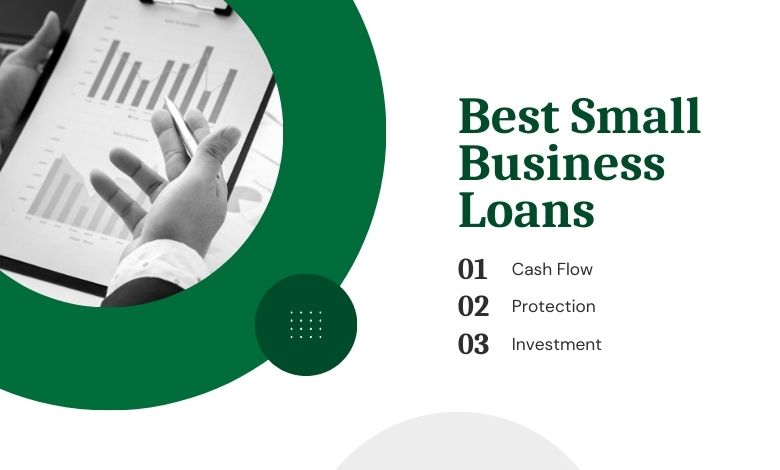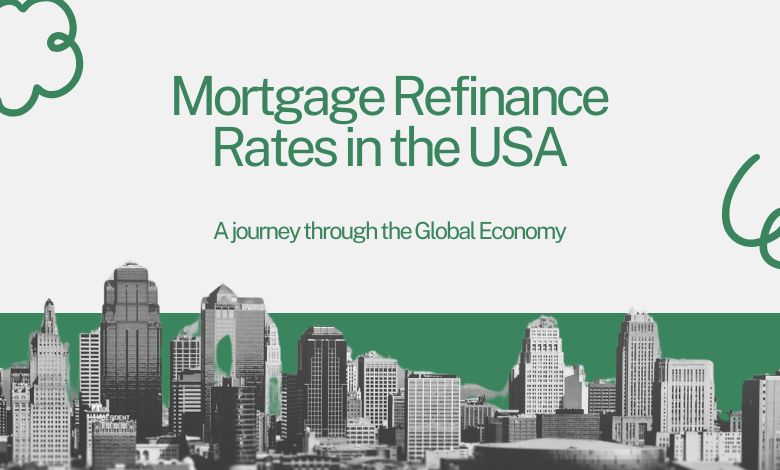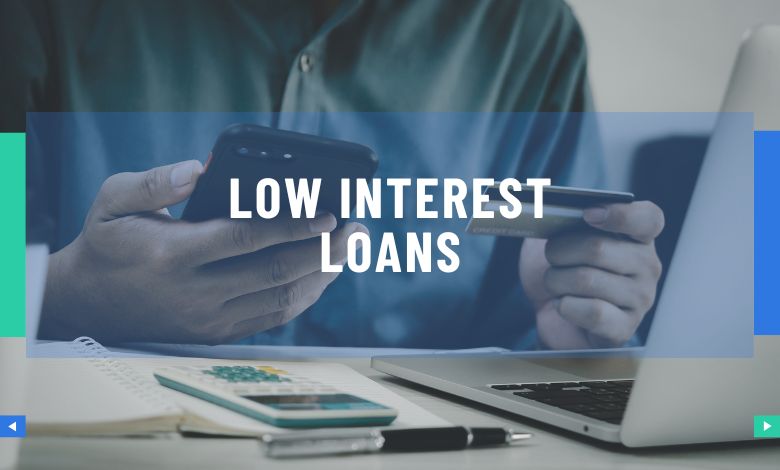Starting a business in the USA has always been both exciting and challenging. One of the biggest hurdles entrepreneurs face is access to funding. Whether you need capital to purchase equipment, hire staff, build inventory, or cover initial operating costs, securing the right small business loan can make or break your startup journey.
In 2025, the U.S. lending landscape offers more options than ever before, ranging from traditional bank loans to fintech-powered online lenders. However, not every funding option is suitable for every startup. Choosing the wrong loan could leave you with high-interest payments or restrictive terms, while the right one can provide the capital and flexibility to scale effectively.
This article explores the best small business loans in the USA for startups in 2025, the criteria lenders use to evaluate applications, and practical tips for entrepreneurs seeking approval.
Why Startups Need Small Business Loans
Startups usually require outside funding to cover:
- Working Capital – Daily operations like rent, payroll, and utilities.
- Inventory Purchases – Stocking up on goods before generating steady revenue.
- Marketing & Branding – Launch campaigns, social media ads, and customer acquisition.
- Technology & Equipment – Computers, tools, machinery, or software.
- Expansion Costs – Moving from a home-based setup to a physical location.
Since most startups lack established credit or cash flow, securing affordable financing is often the biggest challenge. That’s where specialized small business loans come in.
Best Small Business Loan Options for Startups in 2025
1. SBA Loans (Small Business Administration)
SBA loans remain one of the most popular and affordable financing options for U.S. startups. These loans are issued by partner banks and credit unions but backed by the SBA, reducing lender risk and making approval more accessible.
- Best For: Startups with strong business plans but limited collateral.
- Loan Amounts: Up to $5 million.
- Rates: Prime rate + 2.75% (typically 6% – 9% in 2025).
- Terms: Up to 25 years (depending on loan type).
- Popular SBA Loan Programs for Startups:
- SBA 7(a) Loan: General-purpose funding for working capital, equipment, or real estate.
- SBA Microloan: Smaller loans up to $50,000, ideal for very early-stage businesses.
- SBA 504 Loan: Designed for real estate or equipment purchases.
💡 Tip: Startups should prepare a strong business plan, financial projections, and personal credit history when applying for SBA loans.
2. Online Lenders (Fintech Platforms)
Fintech lenders like OnDeck, Fundbox, Bluevine, and Kabbage have transformed small business financing. They provide faster approvals, fewer paperwork requirements, and funding in as little as 24–48 hours.
- Best For: Startups needing quick funding without lengthy bank processes.
- Loan Amounts: $5,000 – $500,000.
- Rates: 7% – 35% APR, depending on creditworthiness.
- Terms: 6 months – 5 years.
- Pros: Fast approvals, flexible criteria.
- Cons: Higher interest rates than SBA or bank loans.
💡 Tip: Online loans are excellent for short-term funding needs but may be costly if used for long-term projects.
3. Business Credit Cards
While not traditional “loans,” business credit cards can be powerful financing tools for startups. They offer revolving credit lines that can cover day-to-day expenses. Many cards also provide introductory 0% APR periods for 12–18 months.
- Best For: Covering smaller expenses, marketing, or short-term costs.
- Credit Limits: $5,000 – $50,000 (depending on personal credit).
- Rates: 0% APR intro offers; 15% – 25% thereafter.
- Pros: Builds business credit history, rewards, and cashback.
- Cons: High interest if not paid off before intro period ends.
💡 Tip: Use business credit cards responsibly and avoid carrying high balances beyond the promotional period.
4. Microloans and Community Development Financial Institutions (CDFIs)
Microloans are small-dollar loans designed for startups, especially those in underserved communities. Nonprofit organizations and CDFIs specialize in helping entrepreneurs who may not qualify for traditional bank loans.
- Best For: Entrepreneurs with limited credit history or minority-owned businesses.
- Loan Amounts: $500 – $50,000.
- Rates: 8% – 13%.
- Terms: Up to 6 years.
- Popular Programs:
- Accion Opportunity Fund
- Grameen America
- LiftFund
💡 Tip: Many CDFIs also offer mentorship and business training in addition to financing.
5. Traditional Bank Loans
Major U.S. banks such as Wells Fargo, Bank of America, and Chase still offer small business loans, though approval requirements are strict. Startups with strong credit and collateral may qualify for competitive rates.
- Best For: Startups with excellent credit and established financials.
- Loan Amounts: $25,000 – $1 million+.
- Rates: 5% – 10%.
- Terms: 1 – 20 years.
- Pros: Lower rates compared to fintech loans.
- Cons: Long approval process, high rejection rates for new businesses.
💡 Tip: If you don’t have an extensive business history, banks may require a personal guarantee or collateral.
6. Equipment Financing
For startups that need machinery, vehicles, or technology, equipment financing can be a smart option. The equipment itself serves as collateral, making it easier to qualify.
- Best For: Restaurants, construction companies, manufacturing startups.
- Loan Amounts: Up to 100% of equipment value.
- Rates: 6% – 15%.
- Terms: 2 – 7 years.
- Pros: No need for additional collateral.
- Cons: Limited use (only for equipment purchases).
7. Personal Loans for Business
In cases where business credit history is nonexistent, entrepreneurs often rely on personal loans to fund their startups.
- Best For: Solopreneurs and early-stage founders with strong personal credit.
- Loan Amounts: $5,000 – $100,000.
- Rates: 6% – 20%.
- Terms: 2 – 7 years.
- Pros: Easier to obtain than business loans.
- Cons: Puts personal credit and assets at risk.
Factors Lenders Consider for Startup Loans
Even though startups lack long-term financial records, lenders evaluate several key factors before approving loans:
- Personal Credit Score – A score above 680 increases approval chances.
- Business Plan – Detailed projections, market analysis, and revenue strategy.
- Collateral – Assets like equipment, vehicles, or property to secure the loan.
- Industry Risk – Some industries (restaurants, retail) are considered higher risk.
- Cash Flow Projections – Lenders want proof that your business can generate enough to repay the loan.
How to Improve Your Chances of Loan Approval
- Build a Strong Credit History – Pay personal debts on time and reduce credit card balances.
- Create a Solid Business Plan – Clearly explain how the funds will be used.
- Separate Personal and Business Finances – Open a business bank account and EIN (Employer Identification Number).
- Consider Smaller Loans First – Start with microloans or credit cards to build credibility.
- Work With Local Credit Unions – They are often more flexible with startups compared to big banks.
Pros and Cons of Startup Business Loans
Pros:
- Access to capital for growth and stability.
- Ability to cover initial expenses without draining personal savings.
- Build business credit history for future financing.
- Structured repayment options.
Cons:
- High rejection rates for new businesses.
- Personal guarantees may risk your personal assets.
- High interest rates if credit is weak.
- Debt obligations before revenue is steady.
Alternatives to Traditional Business Loans
Not every startup can secure a loan. Alternatives include:
- Angel Investors & Venture Capital – Equity-based funding for high-growth startups.
- Crowdfunding (Kickstarter, Indiegogo) – Raise funds from customers in advance.
- Grants & Government Programs – Non-repayable funding for women-owned, veteran-owned, or minority-owned businesses.
- Friends and Family – Informal lending to cover early expenses.
Final Thoughts
The best small business loans in the USA for startups in 2025 depend heavily on your situation. If you have a strong business plan and good personal credit, SBA loans offer some of the most affordable terms. For quick funding, online lenders provide convenience but at higher costs. If you’re seeking smaller amounts, microloans and CDFIs can be game-changers, especially for underserved communities.
Ultimately, choosing the right financing comes down to balancing loan costs, speed, and flexibility with your business’s needs. By preparing in advance, improving credit, and comparing multiple lenders, you can set your startup on the path to long-term success.



